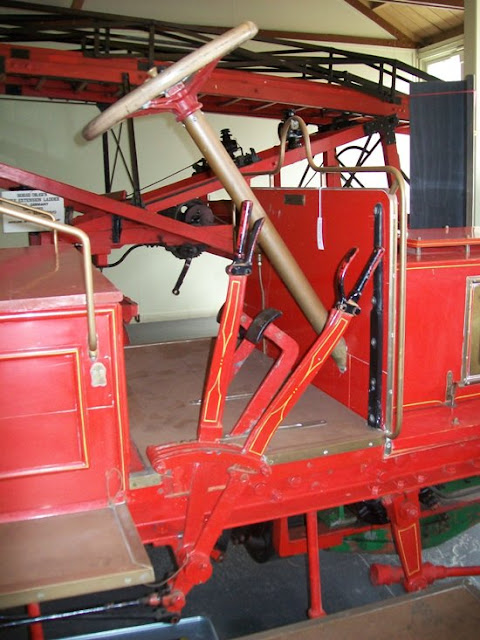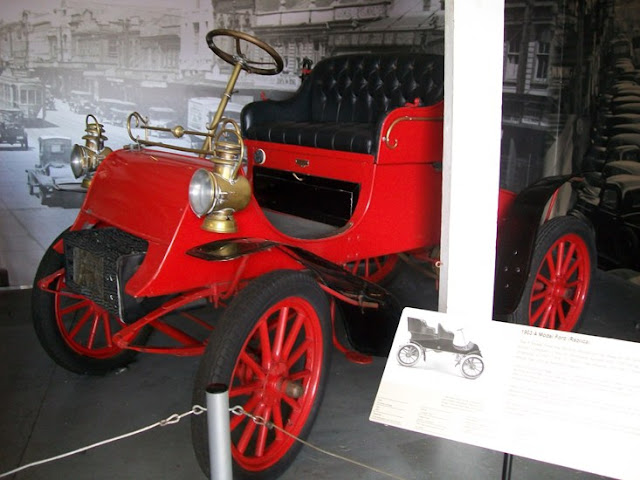The phone rings before 8 am this morning. My friend Robert (Bob) Kinnear, whose ancestor Henry Woods built this store at 151 Mt Eden Road, corner of Esplanade, and operated it in the early 20th century, had seen bulldozers hard at work at the rear of the building, and was quite concerned. He asked if I'd got out there with him to take a look. I said, "Pick me up at 9 am," giving me enough time to pour some coffee down the throat, get myself up to a reasonably respectable standard of dress and dental hygiene, to meet him down by the letterbox (he offered me a lift.)
Grocer Henry Woods (left, courtesy Robert Kinnear) formally purchased the site at the corner of Mt Eden and Esplanade Roads in July 1906 for £350. He was, however, most likely to have already been operating his business there much earlier; he arrived in Auckland around 1899.
With mortgages obtained in 1906, he set about expanding and enlarging the original store to the iconic landmark it is today. Woods joined the Auckland Master Grocers’ Association after World War 1, later becoming chairman of the New Zealand Association. In 1925, he was first chairman for Foodstuffs Ltd, known as owners of the 4 Square chain of stores, His son Edward, who took over the Mt Eden store from his father with his brother George, also became a chairman of Foodstuffs for a period.
The building remained in Woods family ownership until 1971, and has been adapted for various retail purposes, including a restaurant.
The original Woods store, pre 1906 ...
... and the post 1906 version, which is as it is today. Both photos, courtesy Robert Kinnear.
On arrival, I could see this wasn't wholesale demolition. Only the single storey addition at the end was gone. An internal door can be see on the left, but this apparently hadn't been in use for ages (the paper which had covered it over was still stuck to the panels). The chimney was being slowly and carefully dismantled, with bricks piled up neatly at the rear of the property.
Bob had been concerned that the whole thing was somehow under threat. He'd tried asking for info a day ago from the grocer's shop which was still operating on the corner, but hadn't had much luck.
I went in there as he was buying batteries this morning, and asked the owner of the store whether he was remaining there. Assured that yes, he was, I then asked, "Well, what's happening?"
It appears that, no, the demolition isn't going to affect the main part of the building. Some of the shops fronting Mt Eden Road look like repiling is being done, and when Bob and I chatted with a nice guy working for the company doing the work, Silk Construction, he was thrilled to meet Bob, learn that Bob was a descendant of Henry Woods, and had the historic photos. Off they went to copy them -- their intent, so we heard, was to build at the end to a design in keeping with the existing old building. They appreciated learning about the history, and seeing Bob's family photos, saying that would help them in the reconstruction. We were told that they were in contact with George Farrant, at Auckland Council, which was great news.
They even, quite happily, gave Bob three Glenburn bricks from the courtyard/driveway (possibly dating from 1920s-1930s).
So, Bob came away much relieved that his ancestor's store was not under threat. He went on to tell me that this house, across the road on Esplanade, was where the Woods family lived.
Compare with Bob's photos below.
So, at the end of the wee excursion to Mt Eden on a sunny Tuesday morning, I was dropped off back home, and now posting this. If I can, I'll head back later on to see what eventuates from the work there -- and to see just what they do put up at the back of a landmark.
13 August 2012: Latest update, via email from George Farrant, Auckland Council (thanks, George!)
"To update re Woods (as at 12 August): The old store has been jacked level around the decayed street perimeter and repiled; the street verandah has now been dismantled (see above), and the chimney (see above also) has now been accurately and stably re-erected using the saved original bricks - as it was outside the wall line of the original store being restored, it has been rebuilt on the first masonry part of the emerging new building beyond.
"The main brick party wall of the old store (facing Mt Eden) has now been structurally supported on a steel frame structure hidden inside the old building.
"The new building will shortly be out of the ground...
"More later."
13 August 2012: Latest update, via email from George Farrant, Auckland Council (thanks, George!)
"To update re Woods (as at 12 August): The old store has been jacked level around the decayed street perimeter and repiled; the street verandah has now been dismantled (see above), and the chimney (see above also) has now been accurately and stably re-erected using the saved original bricks - as it was outside the wall line of the original store being restored, it has been rebuilt on the first masonry part of the emerging new building beyond.
"The main brick party wall of the old store (facing Mt Eden) has now been structurally supported on a steel frame structure hidden inside the old building.
"The new building will shortly be out of the ground...
"More later."


































































